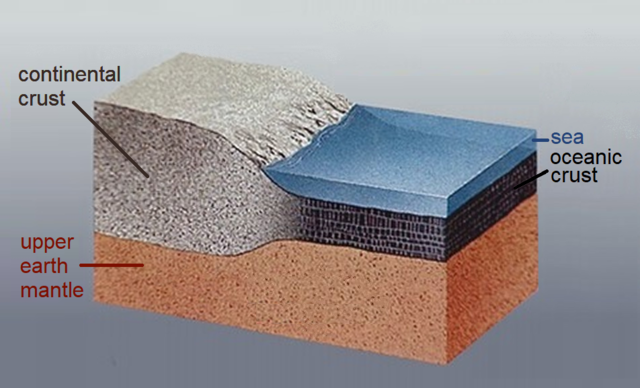
Oceanic crust
Uppermost layer of the oceanic portion of a tectonic plate / From Wikipedia, the free encyclopedia
Dear Wikiwand AI, let's keep it short by simply answering these key questions:
Can you list the top facts and stats about Oceanic crust?
Summarize this article for a 10 year old
Oceanic crust is the uppermost layer of the oceanic portion of the tectonic plates. It is composed of the upper oceanic crust, with pillow lavas and a dike complex, and the lower oceanic crust, composed of troctolite, gabbro and ultramafic cumulates.[1][2] The crust overlies the rigid uppermost layer of the mantle. The crust and the rigid upper mantle layer together constitute oceanic lithosphere.


Oceanic crust is primarily composed of mafic rocks, or sima, which is rich in iron and magnesium. It is thinner than continental crust, or sial, generally less than 10 kilometers thick; however, it is denser, having a mean density of about 3.0 grams per cubic centimeter as opposed to continental crust which has a density of about 2.7 grams per cubic centimeter.[3]
The crust uppermost is the result of the cooling of magma derived from mantle material below the plate. The magma is injected into the spreading center, which consists mainly of a partly solidified crystal mush derived from earlier injections, forming magma lenses that are the source of the sheeted dikes that feed the overlying pillow lavas.[4] As the lavas cool they are, in most instances, modified chemically by seawater.[5] These eruptions occur mostly at mid-ocean ridges, but also at scattered hotspots, and also in rare but powerful occurrences known as flood basalt eruptions. But most magma crystallises at depth, within the lower oceanic crust. There, newly intruded magma can mix and react with pre-existing crystal mush and rocks.[6]